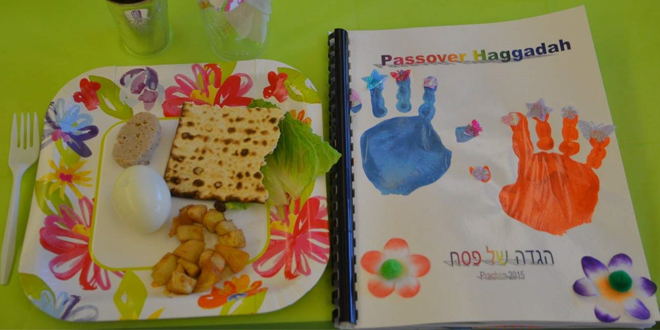04/14/2016
Gross Schechter: Why is this Night Different?
- Share This Story

by Rabbi Hal Rudin-Luria
Passover preparations are in full swing in our home. This entails cleaning the kitchen, meal planning, shopping and eventually cooking. What about the Seder service and rituals, do they need a bit of an update or refresher in the same spirit as our most central Passover question, why is this night different?
Although we use the same Haggadah (Seder book) from year to year, we try something new each time. The rabbis of the Talmud advised that one should plan a seder that involves and engages every family member, and most especially children. Rabbi Akiva suggested distributing sweets to children to keep them awake, so that they can ask questions. Rabbi Eliezer suggested that the matzahs, which are supposed to be eaten quickly on the night of Passover, are done on account of the children, so that they should not fall asleep.
For those hosting Seder, it is our responsibility to create a lively and engaging Seder. For children and the child inside each of us, it is great to add more songs or fun ways to sing old favorites, Seder kits or other materials to represent the plagues, costumes representing the Exodus story or to put on a Passover play. We hold Seder on the floor. Similar to Yemenite practice, we turn our living room into a Middle Eastern tent with blankets and pillows draped all around and trays in front of each person, allowing all to recline. We have bags of costumes for children to play Moses, Pharaoh, slaves which are just pillows cases with arm head holes cut open. We provide them with a script and allow time for them to practice (or go off script) while the adults continue together with a more mature discussion of the Exodus and its meaning today.
This past year, we had a large number of young children at our Seder so we cleared another room and created a life-size Passover Candy Land game board with cards, colored path on the floor and all the Exodus locations and Biblical heroes (Moses, Miriam, Nachshon, Aaron, Pharaoh’s Daughter) and villains (Pharaoh, slave masters). We passed around a mirror for each of us to look into as we are required “to see ourselves leaving Egypt”. We took walking sticks and marched out of Egypt (out of the house) and re-enacted the splitting of the sea using blue-colored tablecloths on the floor and created an obstacle course. We asked each Seder participant to come to Seder with answers to our question of the year, for example- who is the better leader, Pharaoh or Moses? And why? The Haggadah is structured in the form of questions and answers. People learn better when they are moved to ask questions. In this way, they are involved actively in the learning process.
Try to find ways to bring out questions from the children with different Seder foods, like Sephardic charoset recipes from Egypt or creative karpas (not just parsley or celery). I always search the internet for Passover parody songs. Last year we used parodies from Frozen and the Beatles. You can even make your own Seder book on haggadot.com for free and share it with others.
Why is this night different? It is a tradition to make our Seders different and special to share our origin story of the birth of the Jewish nation from slavery to freedom. May your holiday be filled with joy and blessing, inspiration and creativity, questions and answers, peace and harmony.
Chag Kasher v’Sameach. Wishing you and your family a happy Passover.
Rabbi Hal Rudin-Luria


Comments